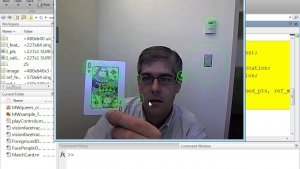 3D Perception
3D Perception
We as humans have faulty perception of the physical environment we live in. Although we are able to distinguish 2D items and 3D items, we do not have the ability to measure them in real time with numeric values. We need to use outside devices to assist us. We have discussed at length these topics within our metrology series, but today we will take a look specifically at a subsection of knowledge within this field and computer vision. With computer oriented object recognition, humans are attempting to make the world more precise through the lens of a computer. There are a variety of things that get in the way of precise object recognition.
Object recognition is defined as technology in the field of computer vision for finding and identifying objects in an image or video sequence. Humans have the ability to recognize objects with bare minimal effort, even though an image varies in different viewpoints. The image also varies when it is translated, scaled, and rotated. People are able to recognize images even when they are somewhat incomplete and missing critical information due to an obstruction of view. Humans use the power of gestalt psychology to do such. Gestalt psychology is defined as a German term interpreted in psychology as a “pattern” or “configuration”.

Gestalt in Practice
Gestalt is based on understanding and perceiving the whole sum of an object rather than its components. This view of psychology was created to go against a belief that scientific understanding is the result of a lack of concern about the basic human details.
The ability for a computer to recognize parts and synthesize them into a larger body object is the main source of error within computer vision and object recognition. This task is extremely challenging for computer vision systems. One must understand that computers have immense capabilities in logically describing constituents or smaller parts, but adding them together consistently to form the basis of a larger item is still difficult. This is personally why I am not too worried about a robot takeover anytime soon. Many approaches to the task have been implemented over multiple decades.

Matlab and object detection/recognition
For a computer to do sufficient object recognition there needs to be a ton of precision with identifying constituent parts. To do this, a computer relies on a vast amount of point cloud data. A point cloud is defined as a set of data points in space. Point clouds are usually produced by 3D scanners. With this point cloud data, metrology, and 3D builds can be created. An object can be recognized through using point cloud data to create a mesh. For us as humans, we are able to interpret that mesh within our 3D realm. However, computers are not that great at such interpretation. They just give us great and precise data to work with. It is important to note that computers are okay at object detection. This refers to being able to decipher a part or object within a larger scene. But when we place multiple parts into a scene or an item with a complex geometry, things become difficult for a computer to decipher. Hence we only use 3D scanners to grab point cloud data and not process what a 3D object is.
Currently in terms of object recognition, computers can barely recognize larger scale items within a 2D setting. It will take a long time for computers to have the graphic capabilities to even decipher what an object would be in a 3D environment. For example, MATLAB is a powerful coding software used for large scale data processing, but computers require a large amount of machine learning and deep learning techniques to process 2D images. First these systems need to do this at a rate of 99.9% confidence before one can move on to 3D images. Humans are not necessarily 100% accurate in terms of processing images either, but they are still slightly more consistent than computer vision techniques. Overall I am interested in learning how to develop such technologies, and I wonder who are the people and organizations wrestling with these problems daily.
The post What is Metrology Part 13: Object Recognition appeared first on 3DPrint.com | The Voice of 3D Printing / Additive Manufacturing.











 3D Perception
3D Perception
